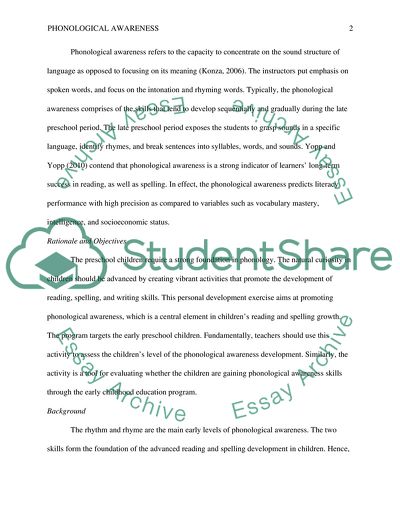Cite this document
(Phonological Awareness Essay Example | Topics and Well Written Essays - 1000 words, n.d.)
Phonological Awareness Essay Example | Topics and Well Written Essays - 1000 words. https://studentshare.org/medical-science/1846513-teaching-children-with-reading-difficulties
Phonological Awareness Essay Example | Topics and Well Written Essays - 1000 words. https://studentshare.org/medical-science/1846513-teaching-children-with-reading-difficulties
(Phonological Awareness Essay Example | Topics and Well Written Essays - 1000 Words)
Phonological Awareness Essay Example | Topics and Well Written Essays - 1000 Words. https://studentshare.org/medical-science/1846513-teaching-children-with-reading-difficulties.
Phonological Awareness Essay Example | Topics and Well Written Essays - 1000 Words. https://studentshare.org/medical-science/1846513-teaching-children-with-reading-difficulties.
“Phonological Awareness Essay Example | Topics and Well Written Essays - 1000 Words”. https://studentshare.org/medical-science/1846513-teaching-children-with-reading-difficulties.


